ATTACKS ON CEBU MEDIA WORKERS: THE LIST (2024 UPDATE)
Killing, harassing journalists
ATTACKS ON CEBU MEDIA WORKERS: THE LIST (2024 UPDATE)
[First published in CJJ on Oct. 4, 2012. First list by Cherry Ann T. Lim and Max Limpag]
Updated June 2024
List of journalists and others working with Cebu news media who were victims of physical violence, threats, and other forms of harassment.
TRACKER by Cebu Journalism and Journalists (CJJ) Magazine and Cebu Citizens-Press Council. List first compiled by Cherry Ann Lim: published Oct. 4, 2012 by Max Limpag, then Jan.3, 2013 by Lim on CCPC website. This expanded and updated list published in September 2021.
BASIS OF LISTING: the person listed shall be a media worker in Cebu or Cebuano born/educated/trained but practicing media work elsewhere. By media worker is meant a person connected with writing, editing, commenting, presenting or producing news or commentary, or otherwise involved in making and preparing content for news media.
NOT REASONS TO EXCLUDE. Any of the following shall not be a reason for exclusion from the List:
✓ If the attack is not moved or prompted by what the victim wrote or broadcast; if the assault is not to retaliate against, or to stop or warn, the victim about the publication. It may relate to his personal or private life or the ideology he holds and spreads.
✓If the victim abused his work with media, did his job poorly or badly, or violated standards of journalism; or,
✓If the victim is a free-lance practitioner, a block-timer, or not accredited by a news media outlet. But whatever verified information on the circumstances of the violence or harassment shall be recorded.
PURPOSE of the list is to keep track of the assaults on Cebuano media workers by diligently recording circumstances of each incident, so as to guide the profession and industry on (a) how to regard and respond to the individual or collective assault and (b) in examining its possible own failing or misconduct that led to the assault.
The core value to uphold is that human life must be protected and the citizen, a media worker or not, has the right to seek justice for a crime against an individual or a group.

FATAL ASSAULTS
1. ANTONIO ABAD TORMIS, newspaper editor and radio broadcaster. Cebu City, July 3, 1961

Antonio Abad Tormis, editor and opinion columnist of “Republic News,” and a commentator on DYRC radio, was shot three times with a .32 cal. revolver as he was about to start his car parked in front of the Masonic Temple building on Borromeo Street, Cebu City.
He just had a haircut at the Esquire barber shop in the building. The gunman, Cesario Orongan, and the mastermind, Felipe Pareja, Cebu City treasurer at the time of Tormis’s murder, were convicted of and imprisoned for the crime. Two others found guilty were Avelino Monzolin, the treasurer’s bodyguard, and Gaspar Mesa. Monzolin recruited Mesa who contacted shooter Orongan. The three testified against the mastermind Pareja by executing an extra-judicial confession. Pareja had been the subject of Tormis’s commentaries on graft.
The Supreme Court affirmed the conviction. The murder of Tormis, who was also a lawyer and broadcaster, was the first killing of a media personality in Cebu, in which the assault was prompted by what the journalist published and all the accused were tried and found guilty.
Antonio Abad Tormis’s memory is honored at the CJJ Media Gallery in Museo Sugbo. A Cebu City street is named after him and a marker stands on the sidewalk along Borromeo Street where he was gunned down. The marker was installed in 1966 by Mayor Carlos Cuizon, destroyed during a street widening, and reinstalled in 2010, on the initiative of the Cebu Citizens-Press Council (PC) during the term of Mayor Michael Rama.
Killing of Tormis was confirmed as work-related. He was murdered because he exposed in his newspaper column and radio program corruption at Cebu City Hall.
Allegations were proved by evidence and the accused perpetrators – the killers and the mastermind — were arrested, prosecuted, and convicted in trial court, with the conviction affirmed in the Supreme Court.
A Cebu Press Freedom Week forum in 2006 agreed that the murder was due to Tormis’s work as columnist and editor as the mastermind wanted to stop and avenge the news and comments about him. No other killing of a media person because of his journalism work has since been similarly solved and documented.

2. VICENTE VILLORDON, radio commentator. Cebu City, December 28, 1984
Vicente “Vic” Villordon, 48, was a practicing lawyer and block-time radio commentator of DYLA, owned by the Associated Labor Unions, which is affiliated with Trade Union Congress of the Philippines.
Police said he was shot in the head at close range three times by two gunmen as he was about to get out of his car near his downtown Cebu City law office near the junction of Sanciangko and Pelaez Sts. He had just come from the radio station at the pier area where he hosted a commentary program “Labor Hour” from 6 a.m. to 8 a.m. on December 28, 1984, United Press International (UP) reported. The assailants fled in a car. He was the seventh victim in media who was slain in that year, 1984.
The UPI news story said Villordon was “known for his sharp criticism of communism and government.” The state-owned Philippines News Agency (PNA) said he “was known for his fiery broadcasts against communism and shenanigans in government.” He received death threats prior to the killing and talked about it on the air. A promo material of DYLA says the radio station “has produced several well-known media personalities in Cebu, including the late Press Secretary Cerge Remonde and hard-hitting radio commentator Vic Villordon who was killed by unknown assassins…”

A bust of Villordon on top of an outsized replica of a broadcaster’s microphone was installed a few years after his death by a group of radio commentators near the scene of the shooting. But what remained, as of 2021, of the sculpted or cast representation of the upper part of Villordon’s body was no longer recognizable.
Motive of the killing was not determined in the police investigation. But in a Philippine Star article in 2006, former communist rebel Pastor Alcover Jr. (who later became a party-list congressman and a councilor of Cebu City) said his former colleagues in the CPP-NPA , such as Leo III Enriquez and Vic Villordon, were killed by their “erstwhile comrades.”
Theory, disclosed by a former congressman and city councilor: revenge killing perpetrated by NPA hitmen. No arrest or prosecution of the killer/s was made or publicized. But motive apparently was the anti-communist statements he made in his radio program.
3. NABOKODONOSOR “NABING” VELEZ, radio commentator. Cebu City, June 1, 1985
Nabokodonosor “Nabing” Velez, 47, a block-time radio commentator of Radio DYLA in Cebu City, was attacked by six gunmen as he watched his 19-year-old daughter being crowned on stage of a beauty contest in Tisa, a June 2, 1985 UPI report said. A village security guard who was watching the pageant with Velez was also shot dead.
A police official said the killing was the result of “a personal grudge.” Velez in many broadcasts talked about a 1984 killing that involved two warring groups, “going to the extent of naming names.” A DYLA employee, unnamed in the news report, said Velez’s commentaries “angered certain groups” but didn’t say more.
Personal grudge was identified by police investigators as the motive, apparently basing on his broadcasts. But police didn’t specify. No one was reported arrested or charged.
4. LEO ENRIQUEZ III, news reporter. Mandaue City, October 10, 1987

Leo Enriquez III doing an interview.
Leo Enriquez III, a news reporter of SunStar Cebu and correspondent of the People’s Journal, was gunneddown near his house in Mandaue City, the Manila-based Center for Media Freedom and Responsibility (CMFR) said in its record of the incident. Two weeks before his death, an arson attempt was made on his house by suspected members of the New People’s Army (NPA).
The New York-based Committee to Protect Journalists (CPJ) in its report said this about Enriquez: “Leo Enriquez, a journalist from the island of Cebu, was killed by the New People’s Army in 1987.
The People’s Journal correspondent was a strong supporter of the vigilantes. “He wore camouflage fatigues and served as a public spokesman for the vigilantes.” The report noted that some reporters “allow their concept of ‘committed journalism’ to blur into the realm of activism and even paramilitary activity.”
The U.S.-based CPJ and Pastor Alcover Jr., former Cebu City councilor and congressman, in a news report categorically said Enriquez was killed by communists: for “strongly supporting” anti-communist vigilantes, according to CPJ, and for being an-ex NPA who defected, according to Alcover.
5. AMBROSIO IYAS, radio commentator. Lapu-Lapu City, April 14, 1995
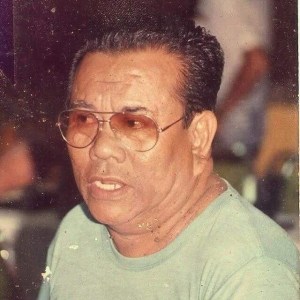
Ambrosio Iyas, 63, a block-time radio commentator on Radio DYLA in Cebu City, was shot on the terrace at his home in Barangay Sta. Rosa, Lapu-Lapu City. The killing occurrred in the height of the campaign period in the May 1995 elections. He was said to be the campaign manager of then Lapu-Lapu City Vice Mayor Norma Patalinghug, who was contesting the reelection of then incumbent mayor Ernest Weigel Jr.
Ester Iyas, wife of the radioman, deplored in 2013, or 18 years after the killing, that the killers were not known or if they were, nobody was charged with the crime because of lack of evidence. We are still suffering from his death, she wrote in an Aug. 12, 2013 comment at the CCPC web site. “I just hope that these killings stop. The (broadcasters’) families also suffer.”
No evidence that Iyas was, or was not, killed for what he spoke about on radio. No suspect was arrested to face the prosecutor or the court. What the police found out in their investigation was also not published.
6. GERONIMO “BOY” CREER JR., radio commentator. Cebu City, May 11, 1995
Geronimo “Boy” Creer, a practicing lawyer and block-time radio commentator, and one Alida Gomez, his secretary who was also said to be his girlfriend, were stabbed to death in his law office near the corner of Sanciangko and Pelaez Streets., Cebu City. Creer also briefly wrote a sports column for The Freeman but his main work was his profession as a lawyer.
One Jake Neil Inso spent five years in jail as a suspect in the killing. But the charge against him was dismissed by the court after the prosecution failed to present witnesses. Inso was shot dead by gunmen riding a motorcycle in tandem on May 15, 2006 in Brgy. Cogon Ramos, Cebu City. No link to Creer’s murder was officially established by the police. Both crime incidents were not solved.
Motive for the Creer killing was not ascertained and there was no claim or evidence that it was related to broadcasting. The inclusion of the woman in the attack was also not explained.
7. ALLAN DIZON, news photographer. Cebu City, November 27, 2004
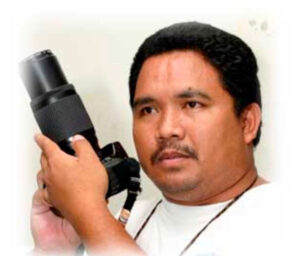
Allan Dizon, 31, was a news photographer of The Freeman and Banat News. He was shot in the head and chest near a car wash in Cebu City’s North Reclamation Area, local news reports said. Two men on a motorcycle stopped near Dizon and the back rider alighted and fired at close range, shooting him again when the photographer tried to run away. Dizon was pronounced dead at 8:30 p.m. at the Cebu City Medical Center.
Regional Trial Court Judge Ireneo Lee Gako Jr., on Jan. 19, 2006, convicted of murder Edgar Belandres, 41, a businessman and Dizon’s neighbor. Belandres was identified by witnesses as the shooter. In March 2010, the Court of Appeals reversed the RTC ruling. Either Belandres was not the actual shooter or the prosecutor just failed to prove Belandres’s guilt “beyond reasonable doubt.”
Police told media that Dizon provided law enforcers information on a drug and gambling syndicate. SunStar Cebu, quoted in a Time magazine story (March 14, 2005, titled “Write and wrong”), said the news photographer was playing “the dangerous game of exploiting his underworld knowledge…” Dizon regularly fed information to the police, enabling them, for example, to successfully raid a drug dealer’s house. “He then went along on the busts, bagging his exclusive “photos in the process.”
Dizon’s information link led police to arrest Belandres but the mastermind was never caught. Belandres himself was acquitted on appeal because his guilt was not “proven beyond reasonable doubt.”
Dizon’s colleagues in The Freeman, a news report said, believed he was killed because of his reports on illegal gambling. More plausible was that he was killed because of the tips he allegedly gave the police, which led to the drug arrests. The exclusive photos Dizon took of the raids were incidental to the act avenged: the alleged squealing. The reporters who wrote the news were spared.
The New York-based Committee to Protect Journalists (CPJ) listed Dizon’s murder as work-related.
8. GEORGE BENAOJAN, radio news reporter, commentator. Talisay City, December 1, 2005
Bantay Radyo reporter and dyDD radio commentator George Benaojan, 27, was shot four times at the South Central Market in Barangay Lawaan 1, Talisay City. He later died at the hospital. Witnesses told police “a lone gunman staked out the area for several hours before Benaojan arrived. “ The shooter fled in a taxicab. The Cebu City Council condemned the killing.
Four days after the killing, on December 5, 2005, former professional boxer Jinky Jagdon was charged with murder. Jagdon was “positively identified by a friend of Benaojan as the shooter” who fired his gun while the witness was then talking with George outside the market stalls. Later, on December 8, then Cebu Provincial Director Vicente Loot “claimed that they knew the identity of the mastermind but would not yet divulge it” so as not to impair the police hunt.
Jagdon, who pleaded guilty when arraigned, was sentenced in 2007 by Regional Trial Court Judge Eric Menchavez to serve from eight years to 12 years in prison for the lesser crime of homicide. Friends of Benaojan believed Jagdon was just a hired gun and that the mastermind remained free. The supposed mastermind talked about by PNP’s Loot was not caught or identified; news archives don’t show any report about it.
Police investigation and the court trial did not disclose the motive or circumstances that could determine whether the killing was work-related. Neither the mastermind’s identity nor the reason for the shooting was established during the police investigation or the court trial of the shooter.
Local news picked up by CPJ said Benaojan reported on “alleged corruption in the local Bureau of Customs” in his radio program and in a “newsletter passed off as a newspaper” circulated only among customs personnel.
9. ELPIDIO ‘JOJO’ DE LA VICTORIA, radio program host. Talisay City, April 12, 2006

News clip about the Cebu killing from “Philippine Star.”
Cebu City Bantay Dagat Commission project director and concurrent market administrator Elpidio “Jojo” dela Victoria was shot three times as he was about to enter the gate of his house in San Roque, Talisay City. Besides working with the City Government, Dela Victoria handled programs at Catholic radio station DYRF.
In September 2006, SPO1 Marcial Ocampo, accused of the de la Victoria killing, was sentenced to 20-to-40 years in jail. Two alleged aomplices and the mastermind have not been identified. De la Victoria’s vigilance against illegal fishing was among the considered motives.
According to veteran broadcaster Yody Sanchez, Jojo de la Victoria handled — first on DYRC, then DYRF — the public service program called “Dangpanan,” in which listeners could air their problems related to labor, Social Security System, Government Service Insurance System and other concerns about government services. The program, Sanchez said, was station-produced.
Broadcaster Leo Lastimosa — in a 2006 column “Arangkada” in The Freeman and Banat News — wrote that days prior to the murder, de la Victoria received his KBP areditation card. De la Victoria reportedly told his colleagues at dyRF Radio Familia, “My photo looks like I’m in a coffin. (“Mora’g naa ko sulod sa lungon.”) Lastimosa was told the anecdote by then KBP Cebu chapter chairman Edward Abad. De la Victoria’s family received P25,000 financial assistance and P10,000 burial assistance from the KBP national office. KBP’s Cebu chapter added P3,000.
Another bit of trivia from Lastimosa’s column: Even before de la Victoria’s wake ended, commercial fishing operators entered the Visayan marine triangle near the Bantayan Island. Lawyer and environmentalist Antonio Oposa, Visayan Sea Squadron head at the time, asked help from Cebu Gov. Gwen Garcia to shoo the fishing vessels.
No categorical conclusion that de la Victoria was killed for what he spoke about in his radio programs. His Bantay Dagat policy in connection with his work for the local government could be the reason he was murdered.
Identification and arrest of the mastermind, which police failed to do, could’ve determined the motive. The shooter, a policeman, was convicted but the “brains” was not known.
The fund aid KBP gave de la Victoria, though, indicated the broadcasters’ organization considered him a broadcaster who was killed in line of duty.
10. JESUS “JESSIE” TABANAO, former radio broadcaster, Cebu City, Sept. 14, 2013

Jesus “Jessie” Tabanao, former regional spokesperson of the Philippine Drug Enforcement Agency 7, was shot to death by a gunman later identified by the police as Arnel “Aye” Solivar, reportedly a hit-man for a fraternity in Barangay Camputhaw, Cebu City on the eve of the Cebu Press Freedom Week.
Tabanao, 35, suumbed to five gunshot wounds. A murder complaint was filed against Solivar. Police believed that Solivar was hired by a drug-trafficking group to silence Tabanao. Before Tabanao’s death, he hosted Radio Station DYRC’s “Police Line-Up” and co-anchored the station’s anti-drug advocacy program, “Drug Watch.” Motive behind the attack was not known. Solivar was still at large.
According to witnesses’ account, Tabanao was about to board his vehicle when fired upon. His pregnant wife said in an interview that he was about to fetch her to celebrate her friend’s win as Miss Press Freedom, a pageant held during Cebu Press Freedom Week.
Tabanao was an accredited member of the Kapisanan ng mga Brodkaster ng Pilipinas (KBP). Before joining PDEA and DYRC, Tabanao worked for eight years with Bombo Radyo Cebu until he resigned in 2008. At the time of the murder, he was handling two radio programs that concerned government advocacies.
Killed apparently for his propaganda work as spokesman of PDEA when he hosted radio programs about the police and the anti-drug campaign. Center for Media Freedom and Responsibility considered his murder as media work-related.
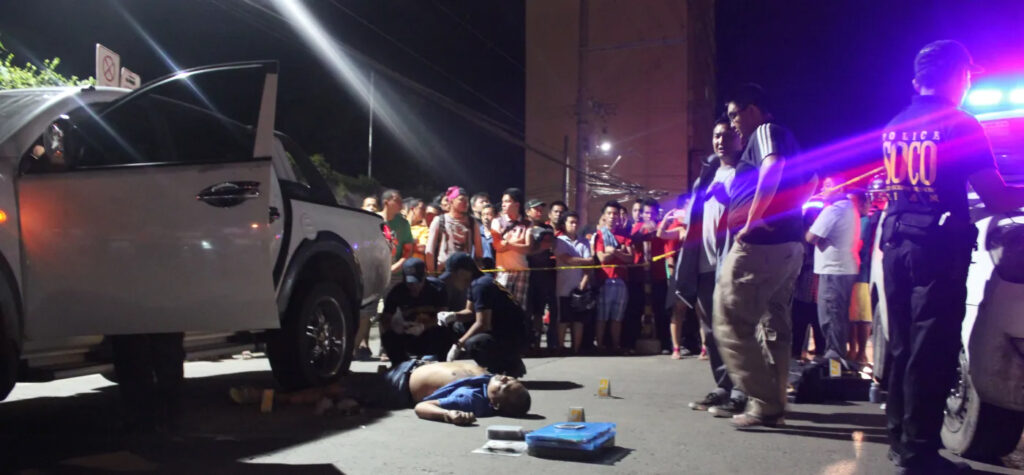
RELATED: Messenger is silenced by Joeberth M. Ocao
11. REYNANTE ‘REY’ CORTES, radio commentator. Cebu City, July 22, 2021
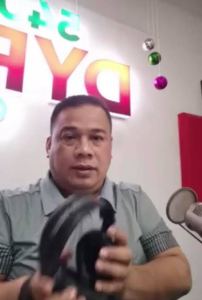
Block-time radio commentator Reynante “Rey” Cortes, 45, was shot dead by an unidentified gunman outside the building in N. Bacalso Avenue, Barangay Mambaling, Cebu City, which houses Radio Station DYRB, just after doing his daily commentary program “Engkwentro.”
It was the second known attempt on the life of Cortes. Eighteen years earlier, on June 12, 2003, he survived a gun attack outside the Bureau of Customs In the pier area; he was wounded in the thigh. [See list on Frustrated Assaults.]
The 2021 killing drew condemnation from the Cebu Citizens-Press Council (CCPC) and National Union of Journalists in the Philippines (NUJP). The Cebu City Police Office formed a special investigation task group (SITG) to solve the case.
In the early phase of its investigation, SITG Cortes concluded that an assault rifle was used in killing: a slug of 5.66 millimeter caliber was recovered from his body. The Crime Laboratory, however, found no lands and grooves on the slug that would lead to the owner of the firearm, if ever the firearm was registered.
As of Sept. 6, 2021, police were questioning two persons of interest who, the SITG said, were not yet considered suspects. 
FRUSTRATED ASSAULTS.
1. RENANTE “REY” CORTES, radio commentator. Cebu City, June 12, 2003
Rey Cortes, then a block-time radio commentator of Bantay Radyo, was shot and wounded in the thigh outside the office of the Bureau of Customs at Pier 1 in Cebu City.
No one was arrested or charged for the shooting. Motive was not formally identified but his commentaries were about alleged corruption in the Customs.
Eighteen years later, in 2021, Cortes was shot and killed just after he finished his radio program at DYRB radio station in Mambaling.
2. CIRSE ‘CHOY’ TORRALBA, radio commentator. Cebu City, June 8, 2004
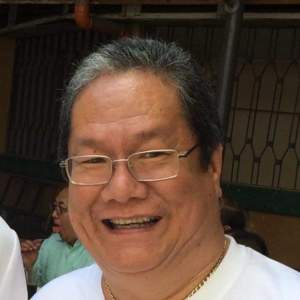
Veteran commentator Cirse Francisco “Choy” Torralba was shot in the left shoulder while he was inside his car parked at the Angel Radio station along Juana Osmeña Street, Cebu City, where he hosted his weekday noontime program “Tug-anin ang Lungsod.”
The veteran broadcaster and his driver identified John Lloyd Ortiz, a second year Marine Transportation student, as the shooter. Ortiz was reportedly motivated by jealousy over Torralba’s friendship with Ortiz’s girlfriend. The Freeman reported that “Torralba identified Ortiz who shot him because of a love triangle.”
In a February 26, 2008 ruling, Regional Trial Court Judge Estela Alma Singco convicted Ortiz of frustrated murder, sentenced him to eight to 12 years in prison, and ordered him to pay P161,214.47 actual damages. But in September 2010, Ortiz was released after the Court of Appeals 18th Division reversed the RTC decision. Torralba decided not to question the ruling, saying he already forgave Ortiz. “I am pained and dismayed but I shall let the matter rest… he still has his conscience to battle with in the remaining years of his life.”
The reason for the attack, as media found out from Torralba himself, was jealousy over a girl with whom the broadcaster and assailant were involved. It was not shown in police investigation and court trial that Torralba was attacked because of what he discussed in his radio broadcast. Torralba has been known as an aggressive commentator whose forte is getting inside information on current raging issues.
3. APOLINARIO “JUN” ARIGO JR., known in the broadcast industry as Jun Arigo, was shot and wounded while he was on the way to board his Ford Escapade on June 20, 2013, a Thursday, past 4 p.m.

He was then 53, a resident of Lawaan II, Talisay Cebu City, “a block-time radio commentator” at Bantay Radyo and, in the May 2013 election campaign, with dyRF and dyDD. (Now, in 2024, he’s 64 and broadcasts from DYCM and dyKC.)
News reports about the shooting said two men on Honda XRM motorcycle attacked Arigo at the parking lot of SM City, north reclamation area, Cebu City. The back-rider shot Arrigo before they drove away, hitting him in the left buttock, with the bullet exiting his left thigh. Arigo was treated at Perpetual Succor Hospital. Interesting sidelight: Arigo managed to hail a taxi which took him to the hospital.
The day after the shooting, Arigo told police he suspected that a politician, who had been the subject of his commentaries, was behind the attempt on his life. He named the “mastermind” to a PNP senior superintendent who didn’t disclose the name to reporters, obviously because they had no evidence yet. “Dako iyang pagduda,” the police officer quoted Arigo.

Headlines of some news stories after the shooting of Jun Arigo.
Apparently they didn’t intend to kill him, said the police, as it looked like it was just a warning, “patagam lang.” The shooter was at least two meters away from Arigo, investigators said. A .45 caliber pistol slug was recovered at the scene. A vendor said the would-be assailants had bought “soft drinks” from her while waiting for their victim.
The equivalent of a Special Investigation Task Group (SITG) was formed, named expectedly “Team Arigo.” Archives don’t show any news report regarding arrest and prosecution of any suspect.
[From news stories of Inquirer.net, Philstar.com, Rappler]
4. RICO OSMENA, radio commentator, shot in Cebu City on Dec. 16, 2021

Rico Osmena suspected vegetable smugglers as the persons who ordered the gun attack on him in 2021.
A block-time radio commentator of DYLA and stringer of the Manila-based broadsheet “Daily Tribune,” Rico Osmena was riding in a modernized jeepney on Urdaneta St. while on its way to Mabolo, Cebu City last Dec. 16, 2021, two days before super-typhoon Odette struck, when two men on a motorcycle attempted to gun him down. He had just finished his radio broadcast for the day.
Isabelo “Rico” Mirasol Osmena – who said his father Miling is half-brother of former Cebu governor Emilio “Lito” Osmena and former senator and Toledo City mayor John “Sonny” Osmena — suffered two bullet wounds from a .45 cal. firearm.
A bullet entered his neck and a part of his back through a wound in the shoulder.
On Jan. 14, 2022, SunStar Explainer quoted Osmena as saying he was alive but “suffering much,” particularly in the left arm, where he felt “like dead.” He had “crucial operations” and “put him to sleep for days” as Cebu and the rest of the country were still reeling from the devastation caused by Odette. A “collateral” victim of the shooting was an unidentified woman who was grazed in the head by a bullet.
RELATED: Seares: Broadcaster Rico Osmena, who survived Dec. 16, gun attack still in pain, SunStar Explainer
National Union of Journalists of the Philippines (NUJP) said the shooting happened close to the May 2022 elections and “set a precedent for what awaits other journalists.” Osmena offered a different theory: He said he believed smugglers of carrots and vegetables got angry at him for reporting and commenting on his interview with Benguet farmers.
The assault on Rico Osmena led to the creation of a Special Investigation Task Group (SITG) on Feb. 3, 2022 to solve the frustrated murder. Six months later, on or about Aug. 3, 2022, the SITG was disbanded and the case turned over as a “cold case” to the region’s CIDG or Criminal Investigation and Detection Group.
As of November 2022, the shooting that Rico Osmena survived was still unsolved. And the motive of the gun attack was still to be officially determined.
OTHER FORMS OF ATTACK AND HARASSMENT.
1. Ex-Scout Rangers descend on SunStar newsroom. Cebu City, November 6, 1987
Bearing long firearms, a group of long-haired ex-Scout Rangers led by Jose Sabandeja and Choy de la Sala barged into Sun.Star Daily’s old office along Osmeña Boulevard, Cebu City, across the street from the Social Security System Building.
They sought out columnist Wilfredo A. Veloso (1935-2001), who also worked as copy editor. The former soldiers were reported to have been involved in a number of disturbances that saw them displaying or firing their firearms and Veloso castigated their behavior in his opinion column. One Veloso column was titled “Ex-Rangers need a psychiatrist.” Sabandeja said: “It’s an insult to our persons. You Sun.Star people should do something to answer what Veloso wrote.” Reporter Noemi Fetalvero interviewed them for a story of their side. The ex-Rangers then left. Instead of sending a letter to the editor, they demanded right of reply in an unorthodox manner: using Armalite rifles as prop.
2. Bobby Nalzaro boxed, held hostage in Mandaue. November 19, 1990

Bobby Nalzaro, then a newscaster and commentator for Bombo Radyo Cebu (Radio DYMF), was mauled for a report on the alleged excessive fare in barges plying the Mactan-Mandaue route, in an attempt to suppress legitimate news coverage.
He was boxed in the head by a bodyguard of a barge operator, who held him by the collar and whose family also detained him even after Nalzaro promised to air their side on the overcharging issue.
3. Boy Veloso confronted by rifle-toting Narcom men. Cebu City, November 6, 1991
Narcotics Command (Narcom) 7 Chief Esa Hasan and three of his men armed with high-powered weapons barged into the Sun.Star Daily newsroom in Cebu City and confronted columnist Wilfredo A. Veloso at gunpoint over his critical accounts of Narcom’s anti-drug campaign.
4. PSG man roughs up photographer Amper Campaña. Mandaue City, October 18, 1996
During a Cebu visit of President Fidel Ramos, Staff Sergeant Diosdado Pobre, said to be a member of the Presidential Security Group, struck Sun.Star Cebu photographer Amper Campaña and Mike Alquinto of the Manila-based Today newspaper.
They took photos of the PSG member grabbing a placard from a rallyist. A warrant for Pobre’s arrest relating to the incident was never served.
5. Radio reporter Ruphil Bañoc punched in the face. Cebu City, April 28, 2000

News clip of story of the mauling in Sun Star Cebu.

Ruphil Bañoc, at the time Bombo Radyo reporter, suffered a cut in his lip after he was punched in the face by an irate Iglesia ni Cristo (INC) member outside the Palace of Justice at the Capitol in Cebu City. He was with fellow Bombo Radyo reporter Gerry Auxilio and station manager German “Jojo” Solante. They went to the Palace of Justice for the clarificatory hearing on the libel complaint filed by INC against Bombo Radyo before the provincial prosecutor’s office.
Before Bañoc was punched, Auxilio and Solante had been mobbed by over a hundred INC devotees who accompanied INC Carcar minister Rizalino Ocampo for the court hearing, during which Atty. Marcelo Bacalso, the counsel of the three Bombo Radyo reporters, alleged that Ocampo hit him on the shoulder with the minister’s palm while he was reading a Supreme Court decision on a libel case filed by a woman who “defamed” a high Iglesia official (the SC cleared the woman). That disrupted the proceedings. The three Bombo Radyo personnel were walking toward their van when Bañoc was punched.
During the commotion, Bañoc allegedly pulled his gun to shoo the INC followers and was disarmed by one PO3 Joel Sanchez, who turned out to be an INC member. Atty. Bacalso charged the minister with serious disturbance; the INC-member cop charged Bañoc with illegal possession of firearm and, with other Bombo personnel, obstructing justice; the police officer, in turn, faced summary dismissal.
Bañoc, now a lawyer and connected with Radio DYHP of Radio Mindanao Network, said the charges against the broadcaster and those they filed against the INC followers were dismissed in an “amicable settlement.” Only Atty. Bacalso’s complaint against the minister reached its conclusion, with the accused found guilty by Municipal Trial Court in Cities Judge Monalisa Tecson.
6. Amper Campaña evicted under guard out of Cebu City Hall. Cebu City, May 5, 2003
Without provocation and without leaving instructions with his staff that he wasn’t letting the media in, Cebu City Mayor Tomas Osmeña ordered Sun.Star Cebu photographer Amper Campaña out of his office. Osmeña didn’t want Sun.Star, a paper owned by a corporation that included his political rival, former Mayor Alvin Garcia. “I don’t want your paper to profit from me,” he said.
Campaña had taken only five steps into the mayor’s office to cover an event when Osmeña confronted him. “Who gave you the authority to get in? Get out!” Osmeña told his bodyguards: “Escort him out of the building!” The two guards escorted Amper to the elevator.
7. Priest ‘verbally abused’ news team. Tabogon, Cebu, July 9, 2003
Fr. Oscar Ornopia castigated a SunStar Cebu team that sought his reaction to the issues publicly raised against him. A day after he was relieved of parish duties in the wake of allegations that he fathered two sons with two women, Ornopia and his brother were placing bets in a mahjong game at the family compound in Barangay Maslog, Tabogon town, Cebu, when other family members allowed the reporters to approach the priest for an interview.
Fr. Ornopia cursed reporters Linette C. Ramos and Joseph C. Tubilan and photographer Alex A. Badayos, calling them “panuway” (devils), “buang” (fools), and “peste” (pests). He also said, “Pamusilon ta hinuon mo ron” (I could shoot you now) at least thrice. The priest and his brother-mayor pounded the mahjong table with their fists and threw around chairs.
8. CDN reporter gets death threats in text messages. May 6 and 7, 2005
Reporter Suzzane Salva of Cebu Daily News told her editors she received text messages warning her to slow down in writing news stories or she would be killed. She suspects one of her sources was behind the death threats. On August 5, 2021, Salva told CJJ Magazine, “As far as I can recall, the threats were related to the news I reported regarding a bribery incident in the prosecutor’s office.”
Other than the stories about the threats published in CDN, nothing else came out of it.
9. Sitio organization feud drags reporter, policeman. Daanbantayan, Cebu, August 6, 2006

Gregg Rubio, a reporter of The Freeman and Banat, alleged that a police officer assigned at the Daanbantayan, Cebu police station threatened to “behead” him.
Members of asitio organization in Daanbantayan where Rubio’s family lives held a meeting to replace their president, the wife of the police officer, because she allegedly failed to account for the cash income during fiesta celebrations. During the election of new officers, Rubio was voted as the new president. That must have angered the police officer who announced he’d accept anybody to replace his wife, as long as it was not Rubio who, the cop said, was a “media man.”
The sitio group held another election for its president and chose Rubio’s mother. Rubio had the police officer’s threat “blottered” as the policeman’s son was allegedly a known troublemaker in the sitio. But he did not file a complaint against the police officer.
10. Photographer Alex Badayos punched, kicked outside City Hall. Bogo City, July 9, 2007
Around 20 supporters of Bogo City Mayor Celestino Martinez Jr. punched and kicked Sun.Star Cebu chief photographer Alex Badayos near the stairway to the Bogo City Hall (Bogo town formally became a city in June 2007). Badayos tried to take photos of those who had snatched a ballot box from Cebu City North District Election Officer Marchel Sarno. The supporters also took Badayos’s camera and laptop. Alex suffered injuries in the head, ribs and arms. Reporters covering the incident were also jeered at, shoved and aused of siding with the police. Badayos in an affidavit said he and Cebu Daily News photographer Tonee Despojo were following a man who had snatched a ballot box from Comelec official Sarno when they were blocked at the landing of a stairway.
In June 2011, the office of the Visayas ombudsman indicted six persons on charges of less serious physical injuries. The six were employees of the Bogo Traffic Management Office under the office of then Bogo City mayor Celestino “Junnie” Martinez Jr. Ombudsman investigators found sufficient evidence against the assailants who were “positively” identified by Badayos. It was not known what happened to the case. From attack to Ombdusman action took four years.
Interesting side note during the attack: Badayos held up his large press card, saying “Medya ko, medya.” Someone asked, “Unsang medya?” When Alex answered, “SunStar,” more blows came.
11. Reporter says police chief sexually harassed her. Talisay City, February 8, 2011

Cebu Daily News correspondent Carmel Loise Matus accused Talisay City Police Station Henry Biñas of sexual harassment. Before the incident, Matus and Bombo Radyo reporter Robert Sabiquil had interviewed Biñas in his office. After the interview, Sabiquil left the office first. As she was about to exit Biñas’ office, she said in her affidavit, the police official pulled her close, put a hand on her breast and attempted to kiss her cheek.
Matus filed an administrative complaint against Biñas before the Police Regional Office 7. Biñas denied sexually harassing Matus, saying he only held Matus on her shoulder and it was a friendly gesture, a SunStar Cebu news story said. Biñas was reportedly found guilty of simple misconduct and he did not receive his benefits for a period of time, said Matus.
12. Reporter verbally clashes with PDEA chief on news story. September 24, 2011
Adrian Alvariño, former Philippine Drug Enforcement Agency (PDEA)-7 director, allegedly harassed Bantay Radyo and Banat News reporter Rey Pasaporte after Pasaporte wrote a story linking Alvariño to the alleged payoff that led to the release of a suspected drug lord.
In his affidavit, Pasaporte said he called Alvariño on September 24, 2011 to comment on text messages about an alleged payoff in exchange for the release of a suspected drug lord. Alvariño asked Pasaporte why the latter had maligned him in the newspaper even though he had already been relieved as PDEA 7 director when the operation that led to the arrest of the drug pusher took place.
Alvariño allegedly told him: “Ito na lang. Tandaan mo ‘yan Rey ha, babalikan kita diyan.” Shortly after, Pasaporte said, he received a text message from Alvarino, saying, “Pasensyahan na tayo.”
13. TV news crew harassed by Koreans at police station. Lapu-Lapu City, February 11, 2013
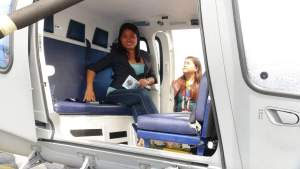
While police watched, four Koreans, including John Lee, who introduced himself as general manager of the Cebu Korean Association, “violently collared” and “grabbed by the neck” GMA Cebu’s Balitang Bisdak reporter Bexmae Jumao-as and cameraman Leofil Labastida outside the Lapu-Lapu City Police Office as they wrested the camera from the news team.
The news crew had captured the Koreans on camera after they refused to be interviewed on a killing involving a Korean suspect. In the homicide section, the GMA news workers were forced to delete the footage. Police, they claimed, did nothing to help them recover their camera from Lee.
14. Reporter ‘challenged to duel’ by PDEA head. November 27, 2013
DYSS Super Radyo reporter and Superbalita Cebu correspondent Guam Logroño filed an administrative complaint against Philippine Drug Enforcement Agency (PDEA) 7 Director Esperidion Javier who allegedly challenged him to a duel over the phone. The PDEA 7 official was irked at Logroño who interviewed him about his personnel raiding a house of a suspected pusher allegedly without a search warrant.
On August 15, 2014, Javier was suspended by PDEA Director General Arturo Cacdac Jr. At the time the suspension order came out, Javier had already been reassigned to another post, a SunStar Cebu story said.
15. Reporter stopped, held by Covid patrol. Cebu City, July 2, 2020

Sheriza Mae Uy, reporter of Cebuano-language newspaper Banat News, was reportedly stopped by “Tagalog-speaking” police officers while she was on duty in Barangay T. Padilla, Cebu City. She was reportedly “held captive” for 15 minutes before a local police official intervened that she was a journalist, according to a Freeman report quoted by Rappler.
The police officers, from the PNP elite unit Special Action Force, were deployed to Cebu City to augment local forces in implementing health protocols as Covid-19 cases were increasing at the time. Cebu City Mayor Edgardo Labella had issued Executive Order 82, stating that media are among the workers permitted to go out without quarantine passes, and they are only required to present their IDs when working.
In an interview with Rappler, Uy denied she was detained nor was she brought to the police station. She said she understood the police officers as they were “just doing their job.”
16. Rappler ‘kores’ barred from police headquarters. Cebu City, May 14, 2021
Rappler’s Cebu correspondent Lorraine Ecarma was barred for two hours from entering the Police Regional Office 7 headquarters in Cebu City where she was about to cover the release of one of the seven individuals arrested during the police operation on a temporary school for Lumad children inside the University of San Carlos Talamban Campus in February.
Ecarma said that reporters of other local media outlets were allowed to go inside the headquarters. Police officers in plain clothes prohibited her from taking videos for “security purposes” and she was told that Rappler was a “fake news outlet.” Ecarma had to wait outside the headquarters before she was allowed entry, on orders by the PRO 7 information officer, Lt. Col. Maria Aurora Rayos, according to a Philstar.com report. The explanation, which didn’t fly: it was a miscommunication. 
12 RADIO STATIONS, 4 TV STATIONS CLOSED
On Aug. 28, 1987, during a bid to overthrow the government of President Corazon Aquino, PC/INP Regional Command 7 Chief Brig. Gen. Edgardo Abenina in Cebu “ordered the takeover of three government buildings and two residences … and the closure of TV and radio stations, except for dyLA which they used for rebel propaganda,” according to The Final Report of the Fact-Finding Commission: IV: Military Intervention in the Philippines: 1986-1987.
The broadcast stations were left with no choice but to go off the air after “uniformed troops in full battle gear entered our stations,” dyKC station manager George Suazon said in a Sept. 2, 1987 Sun.Star Daily report.
“The Armalite was more powerful than the microphone” was how dyRF station manager Fr. Margarito Alingasa, SVD, described the tense atmosphere as the radio stations fell silent from 3-4 p.m.
As National Telecommunications Commission (NTC) regional director Danilo Sy declared that under the NTC Code’s Act 38-46, only the Philippine President could order a radio station closed, dyRF filed a complaint with the NTC in Manila against the local military for its closure.
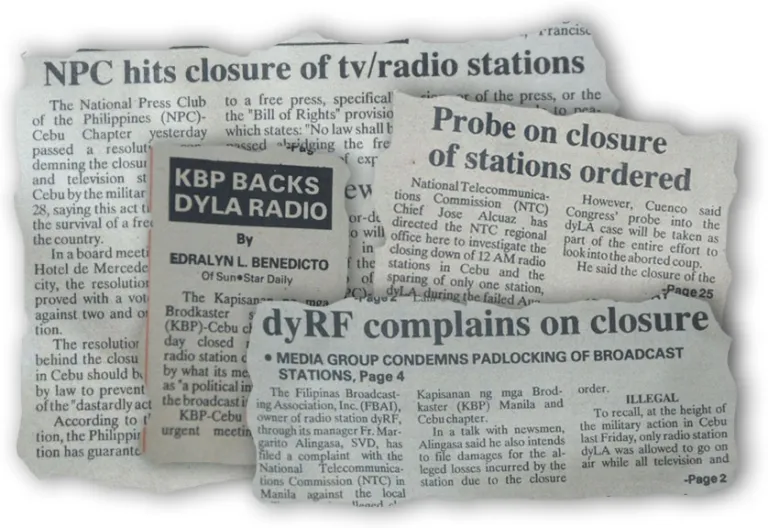
Clippings from Sun.Star Daily
Saying the move echoed the media oppression of the Martial Law years, the National Press Club of the Philippines-Cebu Chapter on Sept. 3 condemned the closure of the 12 AM radio stations and four television stations in Cebu, calling it a violation of the Constitution and a threat to the survival of a free press.
On the other hand, the Kapisanan ng mga Brodkaster ng Pilipinas (KBP)-Cebu, chaired by dyLA manager George Carlos, received flak for failing to criticize or take action against the closure of the broadcast stations, with Alingasa lamenting on the public affairs TV show “On the Spot” that: “When the crisis comes, each of us acts on our own.”
Carlos said it was still unclear who ordered the closure, even if the radio stations had reported that rebel soldiers or policemen carrying out the closure placed Abenina behind the orders. Carlos also defended the station’s broadcasting during the failed coup, saying, “Everything was done with objectivity and professionalism.”
KBP-Cebu stood by its chairman, passing a resolution during a Sept. 1 emergency meeting expressing its continued support for his leadership. The group also rallied behind dyLA, branding as “political interventionism in media” pronouncements by House Speaker Pro-tempore Antonio Cuenco that dyLA’s management would be made to explain before Congress its participation in the aborted mutiny of rebel soldiers. Cherry Ann T. Lim
Other victims of the good fight
Nov. 13, 1949
After it prominently covered the fraud and violence that marred the Nov. 8, 1949 presidential elections, The Pioneer Press displeased local politicians and their leaders. Its publisher-editors Angel Anden and Alfredo Cruz soon received death threats. When heavily armed men started visiting their editorial office, the pair decided to shut down operations and flee to Manila. In its last issue on Nov. 13, 1949, the paper said it was making its exit because it was “not servilely pliant with every stirring wind, but straight and firm and uncompromising.”
July 3, 1961
The Republic News editor and columnist Antonio Abad Tormis was shot in his car parked in front of the Masonic Temple building on Borromeo St., Cebu City. The gunman, Cesario Orongan, and the mastermind, Felipe Pareja, Cebu City treasurer at the time of Tormis’s murder, were convicted and imprisoned for the crime. Pareja had been the subject of Tormis’s commentaries on graft.
Nov. 6, 1987
Bearing long firearms, several long-haired ex-Rangers led by Jose Sabandeja and Choy de la Sala barged into the Sun.Star Daily office looking for columnist Wilfredo A. Veloso. The former Scout Rangers were in the news for their defiance of the law and Veloso had written: “Ex-Rangers need a psychiatrist.” Sabandeja said: “It’s an insult to our persons. You Sun.Star Daily people should do something to counter what Veloso had written.” After reporter Noemi Fetalvero interviewed them, the Scout Rangers left.
Oct. 18, 1996
During the visit of President Fidel Ramos to Mandaue City, staff sergeant Diosdado Pobre, an alleged member of the Presidential Security Group, struck Sun.Star Cebu photographer Amper Campaña and Mike Alquinto of the Manila-based Today newspaper for taking photos of him grabbing a placard from a rallyist. Sun.Star Cebu, in a series of editorials, and other media organizations, condemned the attack.
May 5, 2003
Without provocation or leaving instructions with staff that he wasn’t letting the media in, Cebu City Mayor Tomas Osmeña ordered Sun.Star Cebu photographer Amper Campaña out of his office. Osmeña didn’t want Sun.Star, a paper owned by his political rival, to profit from him. Campaña had taken only five steps into the mayor’s office when Osmeña confronted him. “Who gave you the authority to get in? Get out!” Osmeña told his bodyguards, “Escort him out of the building!” The two guards escorted Campaña to the elevator.
July 9, 2007
Around 20 supporters of Bogo City Mayor Celestino Martinez Jr. punched and kicked Sun.Star Cebu chief photographer Alex Badayos outside the Bogo Municipal Hall after he tried to take photos of those who had snatched a ballot box from Cebu City North District Election Officer Marchel Sarno. The supporters also took his camera and laptop. He suffered injuries in the head, ribs and arms. Reporters covering the incident were also jeered at, shoved and accused of siding with the police. 
2021 UPDATE: Reporting and research –Kevin A. Lagunda. Additional research — Pachico A. Seares and Marit Stinus-Cabugon. Consultant—Cherry Ann T. Lim. Editing — Pachico A. Seares.
INITIAL LISTING in 2013. By Cherry Ann T. Lim, as then associate editor of CJJ Magazine and deputy director of Cebu Citizens-Press Council. First posted at PC website on Oct. 4, 2012 by Max Limpag.
SOURCES: Cebu Citizens-Press Council, Cebu Journalism & Journalists Magazine, Center for Media Freedom and Responsibility, Committee to Protect Journalists, SunStar Cebu, The Freeman, CDN Digital, Banat News, Philstar.com.
